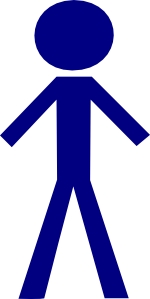Instructional Design For One
People who develop curriculum (teaching or training materials) often follow the principles of instructional design. I should really say they might follow one of many sets of principles because there are various models that guide how instructional designers pursue their craft.
One of the most prevalent models is referred to as ADDIE (Analysis, Design, Develop, Implement, Evaluate). While the ADDIE approach might typically be used for developing classroom-style and other more formal teaching materials, there’s no reason you can’t apply the same principles when planning your self-education.
Here are how the stages of instructional design represented in the ADDIE approach relate to self-education and how you can use them to plan your self-directed, informal learning endeavors. Sometimes, even with self-education, a bit of structure can aid you in your efforts and this might be a useful structure.
- Analysis – All this really means is to spend some time thinking about what it is you want to learn and why, which can include specific career objectives or just simply something you’re curious about. If there’s a specific purpose to your learning, try to break it down into broad topic areas that address the gaps in your knowledge or skills.
- Design – What specific learning objectives can you identify? Once you identify those objectives, how do you want to learn them? What learning strategies are you going to use to accomplish the learning? This is a good time to find at least a beginning set of learning resources such as books, websites, magazines, journals, classes, workshops, speeches, presentations, people you might be able to interview about the subject, and anything else you can think of that might aid your learning.
- Develop – This would normally be the stage during which you’d create the instructional or training materials, but in the case of self-education this could be when you organize your resources, identify any personal milestones you might want to achieve and construct a rough plan for how you’ll approach the learning.
- Implement – In the ADDIE instructional design process this would be when you teach or make arrangements for the teaching of the material. Applied to self-education all it really means is “just do it” and enjoy the process. Don’t hesitate. Dive in and learn it your way. Follow your plan, or don’t. Sometimes the best learning takes place when our path takes an unexpected turn, but you won’t encounter those “aha” moments during your learning unless you get started somewhere.
- Evaluate – This would be when you determine if the instructional materials have accomplished their purpose. For your self-education and learning needs, it’s a time for reflection. After you’ve learned what you want to learn, step back from it and think about what worked best in that particular learning process? What resources did you like using? Did you put enough initial thought into what you wanted to learn and why? The goal is to provide you with information that improves your next self-education project. It’s only through this kind of reflection that you can improve your learning abilities over time.
Remember, instructional design models, like all such models, are nothing more than a well thought out approach for how to do something. But they aren’t perfect. None of them. So always take these sorts of things as helpful input for your own approach, but never forget self-education is ultimately about adapting learning to your own style. I believe the best learning models are those that you create.
If you’d like to read more about instructional design, here are some great links.
http://www.instructionaldesign.org/
http://www.usask.ca/education/coursework/802papers/mergel/brenda.htm
http://www.jcu.edu/education/dshutkin/ED586/Instructional_Design.htm
